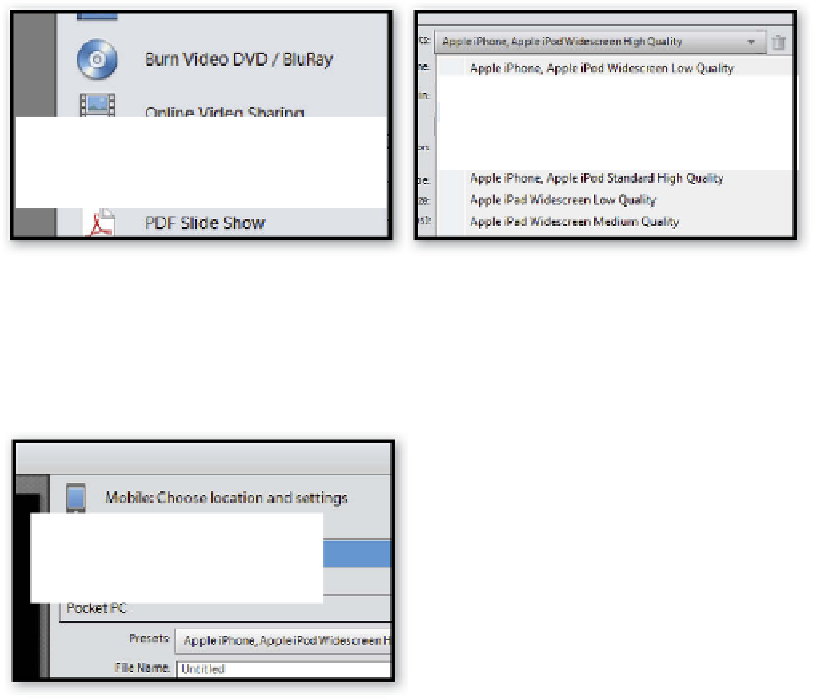Graphics Programs Reference
In-Depth Information
B
It seems as though it was only yesterday that
the mainstay of professional photo presentations
was the ubiquitous black folio case. Pitching for
work from clients, or agencies, involved drag-
ging the stuffed A3 (20 x 16 inches in old mon-
ey) case to the interview and then proceeding to
spread the large prints over the biggest surface
that was available. Now there is a distinct digital
feel to most pitches. Either the photographer's
work is viewed on the net in a web gallery format or, in the case of a face-to-face meeting,
the images are often presented with the aid of a mobile storage device. With the increasing
quality and size of mobile phone screens it is not an unusual event to see photographers
sharing their latest image successes via these devices.
1
2
One of the tricky tasks associated with porting your
images to a Smart Phone is ensuring that the images
are delivered in a file type, size and compression that
suits the playback device. Selecting the Mobile Phones
and Players option from the Share Task Pane fast-tracks
the process by taking advantage of one of the many
already-tested output presets available in Premiere
Elements.
By selecting the photos or videos first in the Organ-
izer the images are transferred into Premiere Elements
and added to a new project entry. When this file opens
in Premiere Elements, the pictures/videos are auto-
matically laid out. To output proceed to the Publish +
Share Pane.
3
There are a range of phone models and makes that you
can select from. Here we select the iPod and iPhone -
High Quality option. Click the Save button to create
the optimized video file. The next step is to transfer
the files to the portable device. In the case of the iPhone
or iPod this process is handled via the Apple iTunes
software.






















Search WWH ::

Custom Search